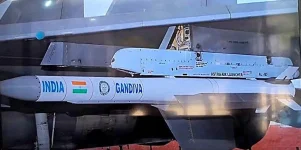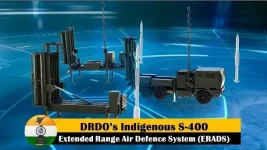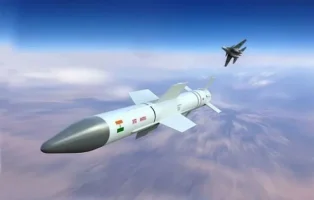- Views: 2K
- Replies: 3
In a significant move to enhance India's air combat capabilities, the Defence Research and Development Organisation (DRDO) is reportedly planning to extend the operational range of its indigenous Astra Mark-2 air-to-air missile to over 200 kilometres.
According to new proposals under review, this upgrade pushes the missile's range significantly beyond its previous 160 km target.
The Indian Air Force (IAF) is expected to place an initial order for approximately 700 units of the upgraded missile, which will be integrated into its frontline Sukhoi Su-30MKI and Tejas fighter jet fleets.
This development follows a renewed emphasis on indigenous weapon systems after recent military successes, such as Operation Sindoor earlier this year, where IAF pilots effectively used earlier Astra missile variants in beyond-visual-range (BVR) engagements.
Defence officials note that the extended 200 km+ range is a strategic necessity, allowing Indian pilots to neutralize hostile aircraft from a safe "standoff distance" without having to fly into the enemy's own weapon engagement zones.
The Astra Mk-2 is being developed as a direct counter to China's formidable PL-15 missile.
Both the Astra Mk-2 and the PL-15 are powered by a sophisticated dual-pulse solid rocket motor. This technology allows the missile to use an initial thrust for high-speed acceleration and then ignite a second pulse in its final phase, providing a massive burst of energy to intercept a target at extreme distances.
However, the new 200km+ Astra Mk-2 will hold a distinct advantage over the export version of the Chinese missile, the PL-15E, which is operated by Pakistan and is publicly reported to have a shorter range capped at 145 km.
This upgrade would place the Indian missile on par with, or superior to, the primary BVR missiles in the region.
While DRDO has not officially detailed its exact modification path, extending the missile's range from 160 km to over 200 km is considered an achievable engineering goal. Dual-pulse motor technology, already proven in missiles like the American AMRAAM, allows for energy-efficient flight paths.
Analysts suggest the range extension could be accomplished by either refining the current propellant formulations for more energy or by slightly increasing the missile's dimensions to hold more fuel, though the latter could pose integration challenges for lighter aircraft like the Tejas.
The Astra missile programme is a cornerstone of India's "Aatmanirbhar Bharat" initiative in defence. The earlier Astra Mk-1, with a range of over 100 km, is already combat-proven and in service.
The new Mk-2 variant features several advanced indigenous components, including a state-of-the-art seeker and a fibre-optic gyroscope, which reports suggest provide superior electronic countermeasure (ECM) resistance.
As trials for the missile continue, this upgrade represents a critical step in fortifying India's aerial doctrine and reducing dependency on costly foreign missile imports.





